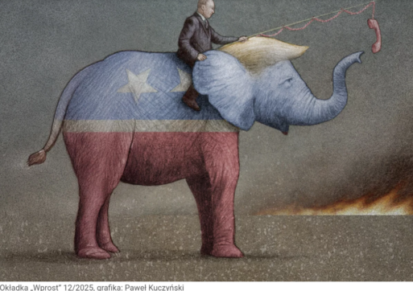Easter in Ukraine is not only a religious holiday, but also a deeply rooted cultural event that combines faith, family ties and centuries-old traditions. Preparations for Easter begin long in advance and include both spiritual practices and the creation of special dishes and symbols that carry the memory of ancestors. From Easter eggs that represent life to ancient dishes such as taratuta from Polissya, zozulya porridge from Vinnytsia region, Cossack kulesh or hganyanka, Ukrainian Easter is a kaleidoscope of flavours, rituals and meanings.
Spiritual preparation and symbolism
Preparations for Easter begin with Lent, a time of spiritual purification, prayer and abstinence. Ukrainians believe that fasting prepares not only the body but also the soul for the Resurrection. During this period, housewives clean their homes, prepare festive dishes, and children learn to paint Easter eggs, one of the oldest symbols of Easter. According to folk beliefs, Pysanka is a talisman that carries the power of life and protection. In Pokuttya, Bukovyna and Hutsul region, the tradition of painting Easter eggs is best preserved: complex geometric patterns, symbols of the sun, stars and trees are applied with wax and natural dyes. The Hutsuls believed: “As long as pysankas are painted, the world will exist.”
Easter cake is another key symbol of the holiday. It’s not just buttery bread, but a sacred dish that represents the body of Christ. It is baked from the best flour, adding milk, eggs, sugar and raisins, and decorated with icing and symbolic dough figures such as crosses, doves or flowers. Easter cake has its own characteristics in each region: in Galicia, it is tall and fluffy, in Polissia it is denser, and in Vinnytsia region, local herbs are often added to flavour it.
Ancient dishes: a taste of the Ukrainian soul
The Easter table in Ukraine is a true reflection of regional diversity and historical memory. In addition to Easter cake and Easter eggs, the table is filled with dishes that go back to ancient times, each with its own history and meaning.
Taratuta from Polissia is a forgotten gem of Ukrainian cuisine that modern chefs are gradually reviving. This dish is called both a snack and a cold soup and is made from sauerkraut with cucumbers, onions, sour cream and herbs. Taratuta was popular in Polissia because of its simplicity and refreshing taste, which was perfect for a spring table. Today, taratut recipes are even appearing in international publications such as The New York Times, bringing the dish back to global recognition.
Zozulia porridge from Vinnytsia region is a unique ceremonial dish that symbolises fertility and prosperity. It is made from millet, with milk, honey and dried fruit, and sometimes hazelnuts or herbal infusions. The name “zozulia” is associated with spring beliefs: the cuckoo was considered a harbinger of new life, and the porridge served at Easter was supposed to ensure the family’s well-being. In the Vinnytsia region, this dish was often served to children in the belief that it promotes health.
Cossack k ulesh is a legendary dish associated with the strength and endurance of the Ukrainian Cossacks. This thick field porridge was made from millet, potatoes, bacon, onions and garlic, sometimes with meat or fish. Kulish was not only a food but also a part of Cossack culture: it was cooked in cauldrons over a fire during campaigns, and each recipe reflected regional characteristics. In Polissia, kulesh could be made with milk or whey, while in Poltava region, buckwheat or corn was added. Today, kulish remains a symbol of unity and strength, and is cooked at festivals and holidays.
Zganyanka is another ancient dish popular in western Ukraine, particularly in the Carpathians. It is a thick porridge made from corn flour and seasoned with butter, sour cream or cracklings. Zganyanka was cooked in ovens and was considered a hearty meal for peasants working in the fields. At Easter, it was served as a symbol of prosperity, as corn was considered the “gold” of the Ukrainian land. Today, poganyanka is returning to restaurant menus as an authentic dish.
Regional peculiarities and rituals
Each region of Ukraine adds something unique to Easter traditions. In Polissia, whole baked piglets were blessed, and Easter egg shells were thrown into rivers in the belief that they would reach the mythical Rahman, the righteous of the afterlife. In Galicia, young men sang “ryndzivky” – Easter songs under women’s windows – and received pysanky and coins for doing so. In the Vinnytsia region, there is a tradition of putting a plate with earth and sown oats on the table to symbolise the resurrection, and in southern Ukraine, a piece of Easter cake and Easter eggs wrapped in a towel were left for absent relatives.
The Easter basket is a separate story. It was filled not only with Easter cake and eggs, but also with salt (a symbol of protection), horseradish (a symbol of strength), sausage, ham and cheese. Every housewife tried to make the basket rich, because it represented the family’s well-being. In the Carpathians, a smoked ham called shovdar was added to the basket, and in Volyn, homemade butter in the shape of a lamb was added.
Easter with soul
Ukrainian Easter is a holiday that unites generations. From painting Easter eggs to cooking taratut or kulesh, every action is filled with love and respect for tradition. These rituals and dishes are not just a heritage, but a living history passed down from grandmothers to grandchildren. Today, when Ukraine is going through difficult times, Easter traditions are becoming even more valuable, reminding us of the indomitable spirit and the power of unity.
Easter cake, pysanky, taratuta, zozulya, kulish and zganyanka are not just food or symbols. It is the soul of the Ukrainian people that comes alive every spring when the bell towers ring out “Christ is Risen!” and families sit down to a festive meal full of hope and faith.
Author: Ekaterina Bogdanenko











